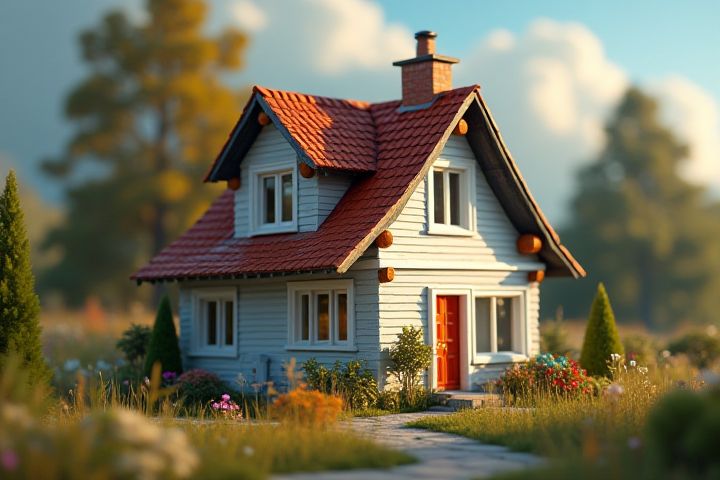
Wallpapering your house yourself is a feasible DIY project that can transform your living spaces with minimal cost. Before starting, gather essential tools such as a wallpaper brush, smoothing tool, and utility knife to ensure a professional finish. Selecting the right type of wallpaper is crucial; consider options like vinyl for moisture-prone areas or fabric for a touch of elegance. Preparation is key--clean walls, repair imperfections, and align wallpaper patterns carefully to avoid mismatched seams. Taking your time with each step will yield satisfying results, enhancing your home's aesthetic appeal.
Can We Wallpaper A House Ourselves
Surface preparation
Surface preparation is crucial for a successful wallpapering project in your home. Begin by cleaning the walls to remove dust, dirt, and grease, ensuring a smooth base for adhesion. Filling in any cracks or holes with spackling compound and sanding the surfaces will enhance the wall's uniformity, with a focus on achieving a flat and clean area. For best results, apply a primer designed for wallpaper; this improves adhesion, reduces wallpaper absorption, and can even protect your walls from moisture damage.
Choosing the right wallpaper
Choosing the right wallpaper involves considering factors such as design, texture, and durability. Look for wallpaper that suits your interior style, whether it's modern, traditional, or eclectic, and pay attention to colors that harmonize with your existing decor. For high-traffic areas, opt for vinyl or washable options that can withstand wear and tear, while lighter fabrics may work well in low-use spaces. You might also want to explore patterns and prints, as they can dramatically affect the perceived size of a room, with vertical stripes creating an illusion of height and large prints adding depth.
Accurate measurements
Accurate measurements are crucial when wallpapering a house yourself to ensure a professional finish. Begin by measuring the height and width of each wall, subtracting any doors and windows, which typically account for about 15-20% of the total wall space. Use a level to mark a vertical line from the ceiling to the floor as a guideline for aligning the first strip of wallpaper, ensuring it runs perfectly straight. Finally, always purchase 10-15% more wallpaper than calculated to account for pattern matching and mistakes during installation.
Necessary tools
To wallpaper your house yourself, you'll need essential tools for a successful project. Start with a wallpaper smoother to eliminate air bubbles and ensure a flat application. A sharp utility knife is crucial for precise cutting of wallpaper, while a seam roller helps to press down seams for a seamless look. Don't forget to have a wallpaper paste brush or roller on hand for even application of adhesive; having a measuring tape and a level will also help ensure straight alignment throughout the wallpapering process.
Removing old wallpaper
Removing old wallpaper can be a manageable DIY project if approached with the right tools and techniques. You'll need a wallpaper scraper, a perforating tool, and a solution of warm water mixed with wallpaper remover or vinegar. Start by scoring the wallpaper with the perforating tool to help the solution penetrate, then apply the mixture generously and allow it to soak for about 15-20 minutes before scraping off the layers. Always work in small sections to avoid damage to the underlying wall and ensure a clean surface for your new wallpaper.
Cutting wallpaper pieces
Cutting wallpaper pieces accurately is essential for achieving a polished finish in your home. First, measure the height and width of your walls to determine the correct dimensions for your wallpaper sections. Use a sharp utility knife or a rotary cutter along a straight edge on a clean, flat surface to ensure precise cuts. Remember to account for pattern alignment, as this will help you achieve a seamless look when you install your wallpaper.
Applying adhesive
Applying adhesive for wallpapering a house yourself is a straightforward process that requires careful preparation. Start by selecting the appropriate adhesive for your chosen wallpaper, whether it's pre-pasted or requires a separate application. Carefully apply the adhesive to the back of the wallpaper or directly to the wall according to the manufacturer's instructions, ensuring even coverage to avoid bubbling or peeling. As you hang each panel, use a smoothing tool to eliminate air bubbles and achieve a flat finish, enhancing the overall aesthetic of your space.
Aligning patterns
Wallpapering a house yourself is an attainable project, especially with a focus on aligning patterns for a professional finish. Begin by measuring your walls accurately and selecting a wallpaper that features a distinct pattern, such as stripes or floral designs, ensuring you have enough material to match the repeats. When applying the wallpaper, use a level or plumb line to ensure the first strip is straight, as all subsequent strips will depend on this alignment. Pay careful attention to the pattern's placement, adjusting as necessary to maintain a seamless and visually appealing look throughout your space.
Smoothing out bubbles
Yes, you can wallpaper your house yourself, and smoothing out bubbles is a crucial step for a professional finish. After applying the wallpaper, use a wallpaper smoother or a credit card to carefully push out air bubbles, starting from the center and moving towards the edges. If you encounter stubborn bubbles, gently puncture them with a pin and press the adhesive down to secure the material. Ensure your workspace is well-lit and free of dust, as this will help you see the bubbles and achieve a flawless application.
Cleaning up excess adhesive
Yes, you can wallpaper your house yourself, but cleaning up excess adhesive is crucial for a professional finish. Use a damp sponge or cloth to gently wipe away any excess paste while it is still wet, ensuring you don't damage the wallpaper. For tougher dried adhesive, a solution of warm water with a mild detergent can help soften it, making it easier to remove without harming the surface. Always be sure to test any cleaning method on a small, inconspicuous area first to prevent potential damage to your wallpaper.
